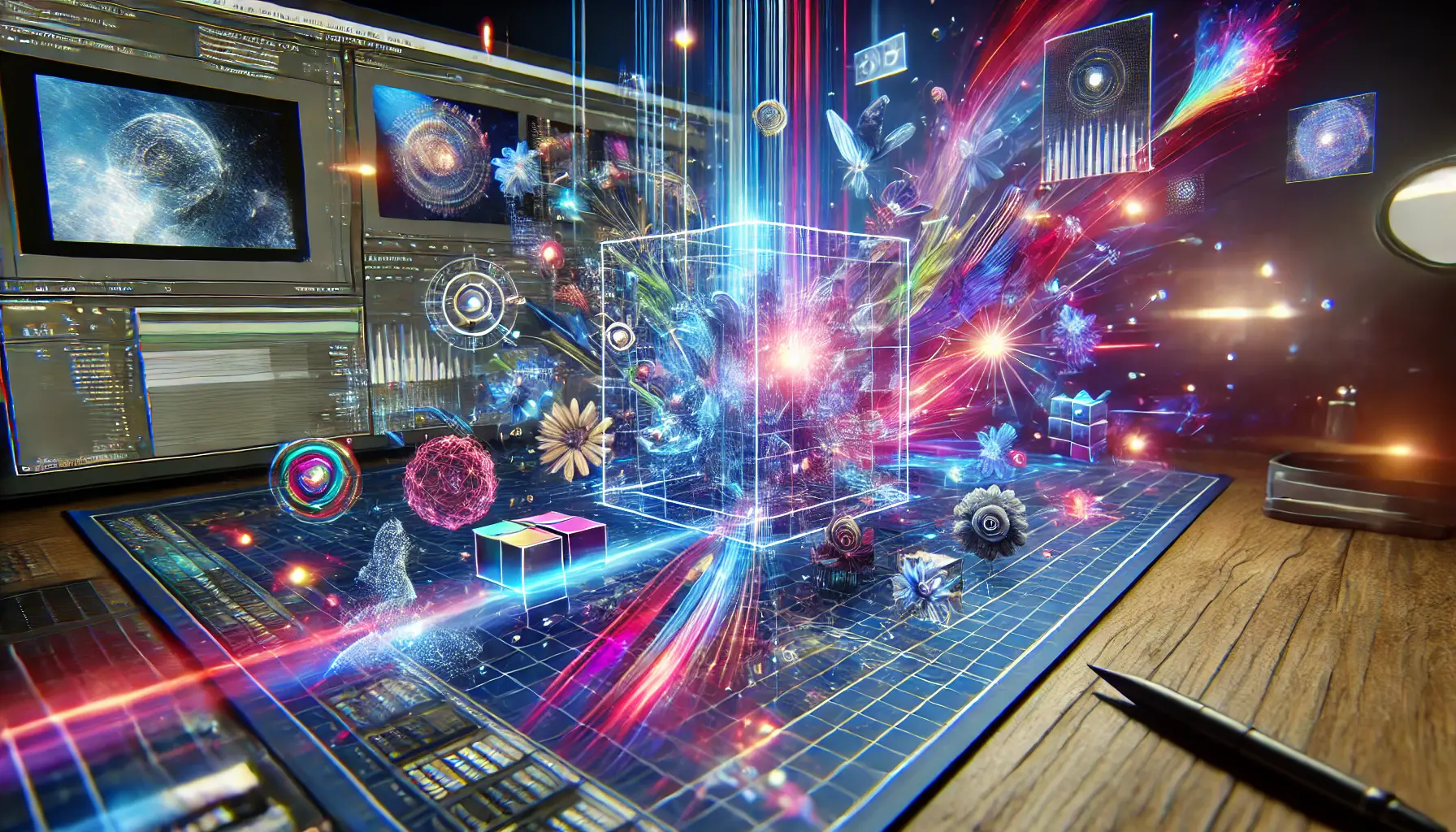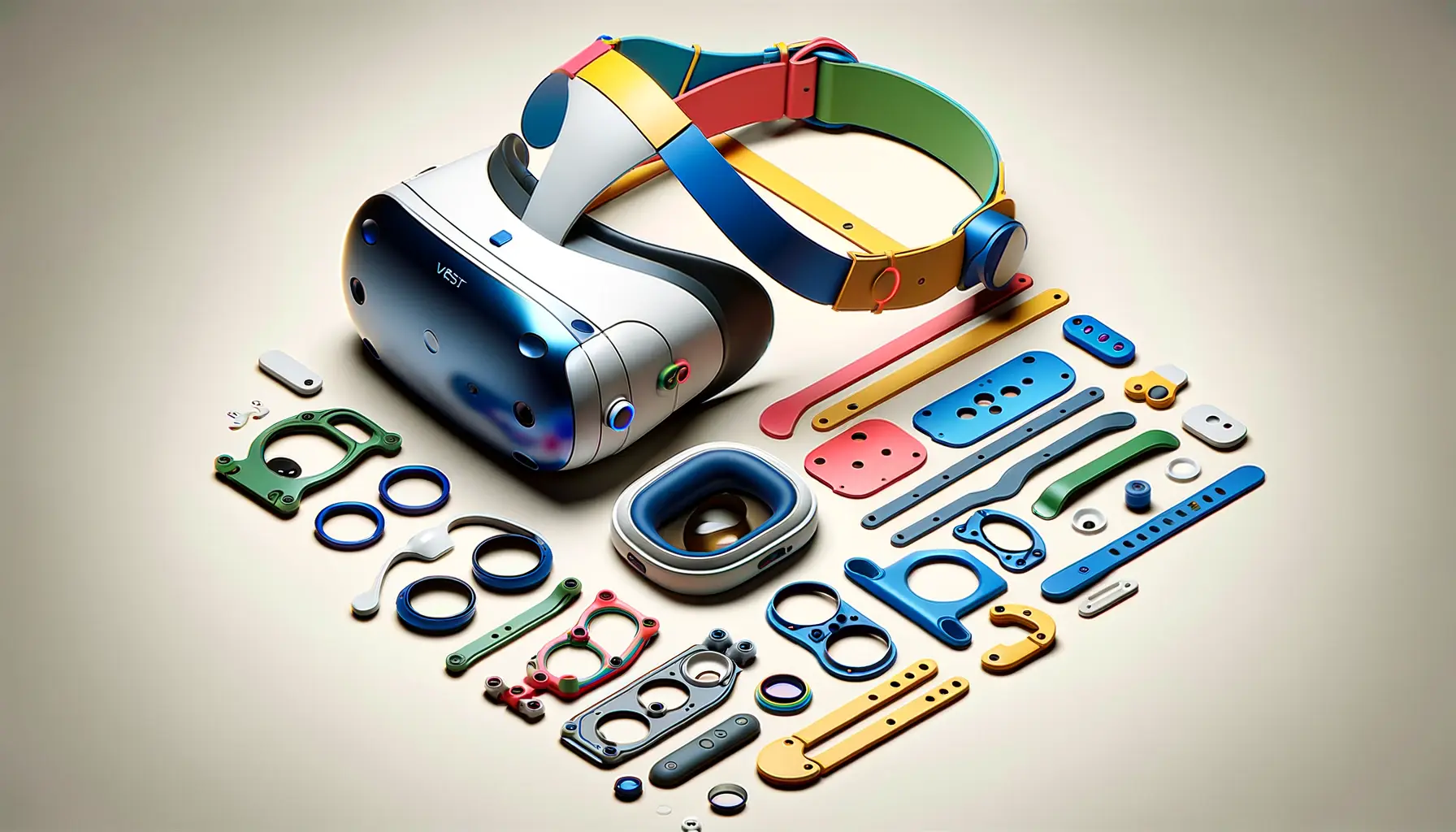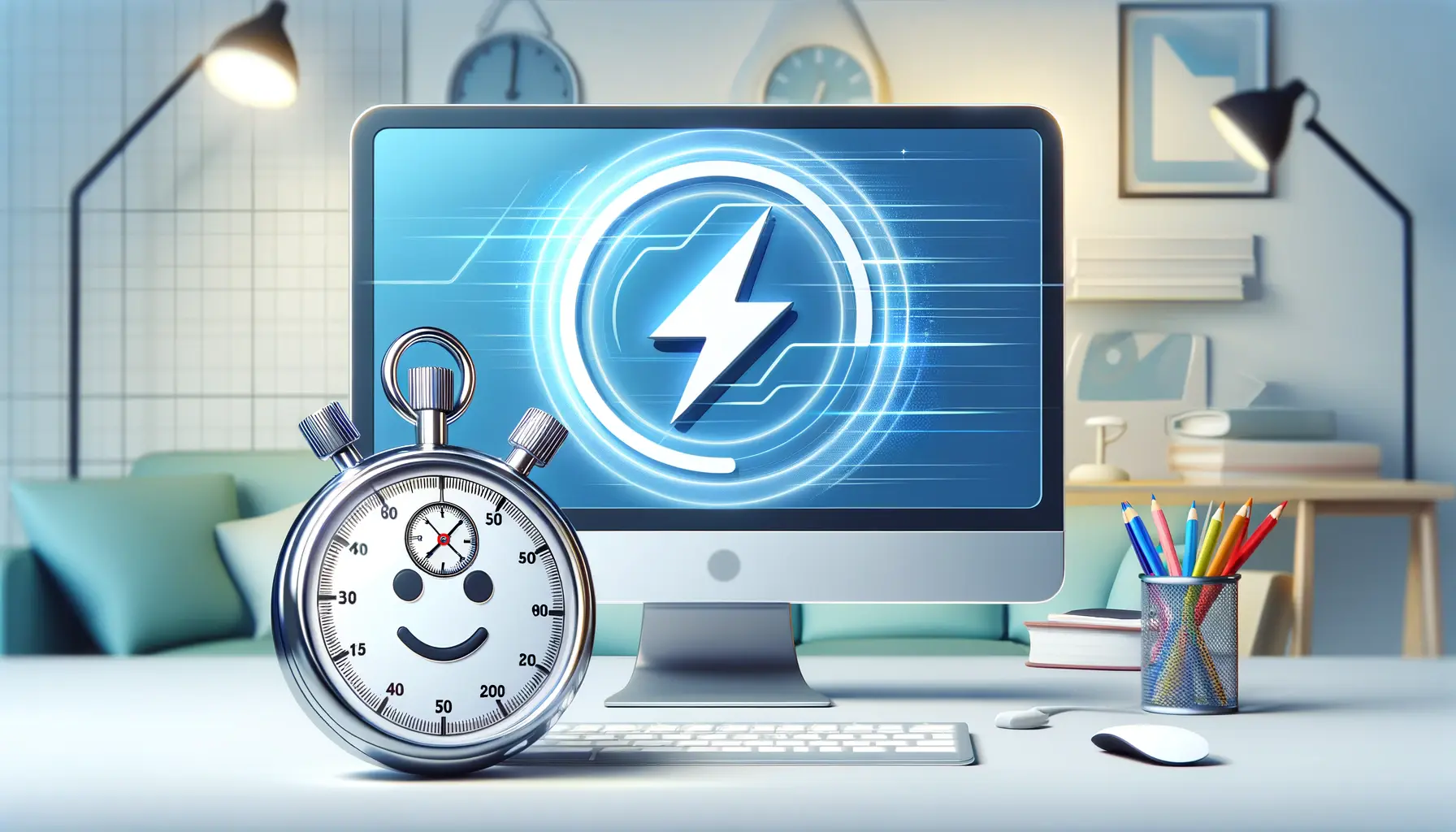The advent of artificial intelligence (AI) has ushered in a new era of technological innovation, transforming industries and daily lives alike.
Among the forefront of these advancements is Claude AI, a cutting-edge AI developed by Anthropic.
Claude AI stands out not just for its advanced capabilities but for its commitment to making AI universally accessible.
This commitment aligns with the growing demand for technology that is inclusive, ensuring that the benefits of AI are available to everyone, regardless of their background or abilities.
Accessibility in technology is more than a feature; it’s a necessity that breaks down barriers and fosters an inclusive environment for all users.
Claude AI’s approach to accessibility is multifaceted, focusing on creating an AI that is not only powerful and efficient but also user-friendly and accessible to people with diverse needs.
This initiative is crucial in a world where technology plays a significant role in education, employment, and social interaction.
By prioritizing accessibility, Claude AI is not just advancing technology; it’s promoting equality and empowerment.
- Understanding Claude AI’s Accessibility Vision
- Enhancing User Experience Through Design
- Accessibility and AI Ethics
- Global Impact of Accessible AI
- Challenges in AI Accessibility
- Innovative Solutions for Accessibility
- Future Directions in AI Accessibility
- Embracing a Future of Universal AI Accessibility
- Claude AI Accessibility FAQs
Understanding Claude AI’s Accessibility Vision
The vision behind Claude AI’s accessibility features is rooted in the belief that everyone should have equal access to the benefits of AI technology.
This vision is critical in a world where digital divides can exacerbate social and economic inequalities.
Claude AI aims to bridge these gaps by developing an AI that is intuitive and adaptable to various user needs, including those with disabilities.
The goal is to create an AI platform that enhances productivity, creativity, and connectivity for all users, regardless of their physical or cognitive abilities.
Accessibility in AI is a complex challenge that requires innovative solutions.
Claude AI tackles this by incorporating universal design principles, which ensure that the AI is usable by the widest range of people possible.
This includes features like voice recognition that can understand and respond to a variety of speech patterns, text-to-speech capabilities for users with visual impairments, and simplified user interfaces that are easy to navigate for users with cognitive disabilities.
By integrating these features, Claude AI is setting a new standard for what it means to be an accessible AI.
Breaking Down Barriers with Advanced Features
One of the key aspects of Claude AI’s accessibility initiative is its advanced features designed to break down barriers for users with disabilities.
For instance, its natural language processing (NLP) capabilities allow it to understand and generate human-like responses, making it an invaluable tool for users with speech or language impairments.
Additionally, Claude AI’s ability to process and synthesize large amounts of information can assist users with learning disabilities by providing simplified summaries of complex topics.
Moreover, Claude AI’s adaptability extends to its user interface, which can be customized to meet the specific needs of individuals.
This flexibility ensures that users with physical disabilities can interact with the AI using alternative input methods, such as eye-tracking technology or adaptive keyboards.
These features not only enhance the user experience but also promote independence and self-reliance among users with disabilities.
Claude AI’s commitment to accessibility is not just about incorporating advanced features; it’s about creating an inclusive digital world where everyone has the opportunity to benefit from AI technology.
Enhancing User Experience Through Design
At the heart of Claude AI’s accessibility efforts is a focus on enhancing the user experience through thoughtful design.
This involves more than just technical features; it’s about creating an interface that is welcoming and easy to use for people of all abilities.
By prioritizing user experience (UX) design, Claude AI ensures that its platform is not only powerful but also accessible and enjoyable to use.
The design process for Claude AI involves extensive research and user testing, including feedback from individuals with disabilities.
This collaborative approach ensures that the AI’s design is not only functional but also empathetic to the needs of a diverse user base.
The aim is to remove any obstacles that might hinder a user’s ability to interact with the AI, thereby providing a seamless and inclusive experience.
Key Design Principles for Accessibility
- Clarity: Ensuring that information is easy to understand and that commands and feedback are clear and concise.
- Consistency: Using familiar patterns and interfaces to help users quickly learn how to navigate and use the AI.
- Customizability: Allowing users to adjust settings such as text size, color contrasts, and speech speed to suit their individual needs.
- Control: Giving users the ability to control their interaction with the AI, including the option to pause, repeat, or slow down information.
These design principles are integral to making Claude AI not just accessible but also empowering for users.
By adhering to these guidelines, Claude AI can accommodate a wide range of preferences and abilities, ensuring that everyone can benefit from its capabilities.
Implementing User Feedback for Continuous Improvement
Another critical aspect of enhancing the user experience through design is the ongoing implementation of user feedback.
Claude AI’s development team actively seeks out and incorporates feedback from users, particularly those with disabilities, to continually refine and improve the AI’s accessibility features.
This iterative process ensures that Claude AI remains at the forefront of accessible technology, adapting to the evolving needs of its users.
Through regular updates and improvements, Claude AI demonstrates a commitment to not just meeting but exceeding accessibility standards.
This dedication to continuous improvement reflects a broader commitment to inclusivity and user empowerment, ensuring that Claude AI remains a valuable tool for all users, regardless of their abilities.
Incorporating user feedback is not just about fixing issues; it’s about understanding the diverse ways in which people interact with technology and ensuring that Claude AI is a versatile and inclusive platform.
Accessibility and AI Ethics
The integration of accessibility into AI development is not just a matter of convenience; it’s a crucial ethical consideration.
As AI technologies like Claude AI become more embedded in our daily lives, ensuring these tools are accessible to everyone becomes a matter of equity and justice.
The ethical implications of AI accessibility go beyond mere compliance with legal standards; they touch on the core values of inclusivity, respect, and human dignity.
For Claude AI, addressing these ethical considerations means actively working to eliminate biases and barriers that could prevent certain groups from benefiting from AI.
This involves a continuous process of evaluation and adjustment to ensure that the AI’s algorithms and outputs are fair and equitable for all users.
By prioritizing ethical considerations in its accessibility efforts, Claude AI is helping to set a standard for responsible AI development.
Combating Bias in AI
- Data Diversity: Ensuring the data used to train Claude AI includes diverse perspectives and experiences to reduce bias in AI responses.
- Algorithmic Transparency: Making the processes behind AI decisions understandable and transparent, allowing for accountability and trust.
- User Empowerment: Providing users with the ability to report biases or inaccuracies, contributing to the AI’s ongoing improvement.
These strategies are essential for creating an AI that serves everyone fairly and equitably.
By actively combating bias, Claude AI not only becomes more accessible but also more trustworthy and reliable for all users.
Ensuring Equity in AI Accessibility
Equity in AI accessibility means that everyone, regardless of their abilities or background, should have the same opportunities to benefit from AI technologies.
For Claude AI, this means providing adaptive features and support that cater to a wide range of needs, ensuring that no one is left behind.
It’s about recognizing the unique challenges faced by individuals with disabilities and addressing these challenges head-on.
By focusing on equity, Claude AI is contributing to a more inclusive society where technology serves as a bridge rather than a barrier.
This commitment to equity is not just beneficial for users with disabilities; it enhances the AI experience for all users, making Claude AI a more versatile and effective tool.
Ensuring accessibility and equity in AI is not just the right thing to do; it’s essential for creating technologies that truly benefit humanity as a whole.
Global Impact of Accessible AI
The push for accessible AI, exemplified by initiatives like Claude AI’s, has a profound global impact, transcending borders and cultures.
In a world increasingly reliant on digital technologies, the importance of making AI universally accessible cannot be overstated.
Accessible AI has the potential to empower individuals worldwide, offering unprecedented opportunities for education, employment, and social participation.
By democratizing access to AI technologies, Claude AI is playing a pivotal role in leveling the playing field.
This is especially significant in low-resource settings or communities historically marginalized in the digital age.
Accessible AI can bridge educational gaps, provide assistive technologies for people with disabilities, and support economic development by enabling new forms of entrepreneurship and innovation.
Empowering Education and Learning
- Personalized Learning: Claude AI can adapt educational content to fit the learning styles and needs of individual students, making education more inclusive and effective.
- Language Learning: With its advanced language capabilities, Claude AI supports language learning, breaking down barriers for non-native speakers and fostering global communication.
These educational applications of Claude AI not only enhance learning outcomes but also promote equity in education, ensuring that learners worldwide have access to high-quality educational resources.
Facilitating Economic Inclusion
- Entrepreneurial Support: Claude AI can provide personalized advice and insights for entrepreneurs, especially in underserved communities, helping to drive local and global economic growth.
- Accessibility in the Workplace: By offering tools that make the workplace more accessible, Claude AI enables individuals with disabilities to participate fully in the economy, contributing to a more diverse and inclusive workforce.
The economic benefits of accessible AI are far-reaching, contributing to a more equitable and inclusive global economy.
By providing tools and resources that support economic inclusion, Claude AI is helping to ensure that the benefits of AI are shared by all.
The global impact of accessible AI like Claude AI is a testament to the transformative power of technology when it is developed with a commitment to inclusivity and equity.
Challenges in AI Accessibility
While the vision for universally accessible AI is compelling, achieving this goal presents several challenges.
These obstacles range from technical hurdles to societal barriers, each requiring thoughtful solutions and ongoing commitment.
Understanding these challenges is crucial for developers like those behind Claude AI, as it informs the strategies and innovations needed to make AI truly accessible to everyone.
Technical challenges involve developing AI systems that can adapt to a wide range of user needs and preferences.
This includes creating interfaces that are intuitive for people with various disabilities, ensuring compatibility with assistive technologies, and developing AI responses that are clear and understandable for all users.
Additionally, maintaining privacy and security for users, especially those who may be more vulnerable, is a paramount concern.
Technical Hurdles
- Interoperability with Assistive Technologies: Ensuring AI systems work seamlessly with existing assistive devices and software is a complex technical challenge.
- Adaptive User Interfaces: Designing user interfaces that can be easily customized to meet a wide range of needs requires innovative approaches and technologies.
- Data Privacy and Security: Protecting the sensitive information of users, particularly those with disabilities, is critical in maintaining trust and safety.
Addressing these technical hurdles is essential for creating AI systems that are not only accessible but also secure and reliable for all users.
Societal and Cultural Barriers
Beyond technical challenges, there are societal and cultural barriers to AI accessibility.
These include a lack of awareness about the needs of people with disabilities, cultural attitudes towards technology use, and economic disparities that limit access to technology.
Overcoming these barriers requires efforts to educate and engage communities, promote inclusive policies, and ensure affordable access to technology.
- Awareness and Education: Raising awareness about the importance of AI accessibility and educating developers and users about best practices is crucial.
- Inclusive Policies: Advocating for policies that promote accessibility and inclusivity in technology development and deployment is essential for systemic change.
- Economic Accessibility: Ensuring that AI technologies are affordable and accessible to people in low-income communities is a key challenge.
Overcoming these challenges is a collective effort that requires the collaboration of developers, users, policymakers, and advocates.
By addressing both technical and societal barriers, we can move closer to the goal of making AI like Claude AI accessible to everyone.
The journey towards accessible AI is filled with challenges, but each obstacle overcome brings us closer to a more inclusive and equitable digital future.
Innovative Solutions for Accessibility
The path to making AI universally accessible is paved with innovation.
Developers and researchers are constantly exploring new ways to overcome the challenges of AI accessibility, employing creative solutions that promise to make technology more inclusive.
These innovations are crucial for transforming the vision of accessible AI into a reality, ensuring that AI tools like Claude AI can be used by everyone, regardless of their abilities.
From advanced algorithms to user-centric design, the landscape of AI accessibility is evolving rapidly.
These innovations not only address the immediate needs of users with disabilities but also enhance the overall user experience, making AI tools more intuitive and effective for a broader audience.
Advancements in Natural Language Processing (NLP)
- Improved Understanding: Enhancements in NLP allow AI like Claude AI to better understand and interpret the nuances of human language, making it more accessible to users with speech and language impairments.
- Language Inclusivity: Advances in NLP are also breaking down language barriers, enabling AI to support a wider range of languages and dialects, thus making it more accessible globally.
These advancements in NLP are a cornerstone of making AI more accessible, ensuring that users can interact with AI in a way that feels natural and intuitive.
User-Centric Design Innovations
- Adaptive Interfaces: New developments in user interface design allow for more adaptable and customizable experiences, catering to the unique needs of each user.
- Accessibility Features: Innovations in accessibility features, such as voice control, screen readers, and alternative input methods, are making AI tools more usable for people with various disabilities.
By focusing on user-centric design, developers can create AI tools that are not only powerful but also accessible and enjoyable to use for everyone.
Collaborative Efforts for Inclusive Technology
Beyond individual innovations, the push for accessible AI is also characterized by collaborative efforts across industries and communities.
Partnerships between tech companies, disability advocacy groups, and academic institutions are fostering a more inclusive approach to technology development.
These collaborations are essential for sharing knowledge, resources, and best practices, ensuring that accessibility remains a priority in the rapidly evolving field of AI.
Through these innovative solutions and collaborative efforts, the dream of universally accessible AI is becoming more attainable.
As technology continues to advance, the commitment to accessibility ensures that the benefits of AI will be shared by all members of society, regardless of their physical or cognitive abilities.
Innovation in AI accessibility is not just about overcoming technical barriers; it’s about reimagining how technology can serve humanity in more inclusive and empowering ways.
Future Directions in AI Accessibility
The journey towards fully accessible AI is ongoing, with new challenges and opportunities emerging as technology evolves.
The future of AI accessibility looks promising, driven by continuous innovation, growing awareness, and a strong commitment to inclusivity.
As we look ahead, several key trends and developments are poised to shape the landscape of accessible AI, further expanding its potential to empower individuals and transform societies.
For Claude AI and similar technologies, the future involves not only enhancing existing features but also exploring new ways to integrate accessibility into every aspect of AI development.
This forward-looking approach is essential for ensuring that the benefits of AI are accessible to everyone, including those with disabilities, and for fostering a more inclusive digital world.
Emerging Technologies and Accessibility
- Artificial Intelligence of Things (AIoT): The integration of AI with the Internet of Things (IoT) promises to create smarter, more accessible environments that can adapt to the needs of users with disabilities.
- Augmented Reality (AR) and Virtual Reality (VR): These technologies offer new ways to create immersive, accessible experiences for education, training, and entertainment.
Emerging technologies like AIoT, AR, and VR hold great potential for enhancing accessibility, providing new tools and platforms for inclusion.
Global Collaboration for Inclusive AI
The global nature of the digital world necessitates international collaboration to address the challenges of AI accessibility.
By working together, countries, organizations, and communities can share knowledge, resources, and best practices, accelerating progress towards inclusive AI.
This collaborative approach is crucial for developing standards and guidelines that ensure AI technologies are accessible and beneficial for all.
As AI continues to evolve, the commitment to global collaboration will play a key role in shaping a more inclusive future, where technology empowers everyone, regardless of their abilities.
Enhancing AI Literacy and Education
Ensuring that individuals have the knowledge and skills to interact with AI is another critical aspect of accessibility.
As AI becomes more integrated into daily life, enhancing AI literacy and education will be essential for enabling users to make the most of these technologies.
This includes providing accessible learning resources and training programs that cater to a diverse range of needs and learning styles.
By focusing on AI literacy and education, we can empower individuals to fully participate in the digital world, unlocking new opportunities for personal and professional growth.
The future of AI accessibility is not just about technology; it’s about building a more inclusive society where everyone has the opportunity to benefit from the advancements of AI.
Embracing a Future of Universal AI Accessibility
The journey through the realms of Claude AI and its commitment to accessibility has unveiled the multifaceted layers of making AI universally accessible.
This exploration has not only highlighted the current state of AI accessibility but also shed light on the innovative solutions and future directions that promise to make AI an empowering tool for all.
As we stand on the brink of a new era in technology, the importance of embedding accessibility into the very fabric of AI development cannot be overstated.
The Pillars of Accessible AI
At the core of Claude AI’s mission lies a steadfast commitment to the principles of inclusivity, equity, and universal design.
These principles serve as the guiding pillars for developing AI technologies that are accessible to everyone, including those with disabilities.
By focusing on user-centric design, ethical AI practices, and innovative solutions, Claude AI is paving the way for a future where technology transcends barriers and fosters an inclusive digital society.
Challenges and Opportunities Ahead
The path to achieving universal AI accessibility is fraught with challenges, from technical hurdles to societal barriers.
However, these challenges also present opportunities for growth, innovation, and collaboration.
Overcoming these obstacles requires a collective effort from developers, users, policymakers, and advocates alike.
By embracing these challenges as opportunities, we can accelerate progress towards a more accessible and inclusive digital world.
- Continued innovation in AI and related technologies will be crucial for addressing the evolving needs of users.
- Global collaboration and knowledge sharing can help establish best practices and standards for AI accessibility.
- Enhancing AI literacy and education will empower users to fully leverage the benefits of accessible AI technologies.
In conclusion, the quest for universal AI accessibility, as exemplified by Claude AI, is a testament to the transformative power of technology when developed with a commitment to inclusivity and empowerment.
As we look to the future, it is clear that accessible AI has the potential to not only enhance individual lives but also to build a more inclusive society.
The journey towards this future is ongoing, and each step forward brings us closer to realizing the vision of making AI universally accessible.
Claude AI Accessibility FAQs
Explore common questions about making AI universally accessible with Claude AI.
Yes, Claude AI is designed to offer personalized recommendations, adapting to individual user preferences and needs for enhanced accessibility.
Claude AI excels in complex problem-solving by understanding and processing user queries with advanced natural language capabilities.
Yes, Claude AI continuously learns and improves, utilizing feedback and interactions to enhance its performance and accessibility features.
Claude AI is accessible globally, supporting users worldwide with its inclusive design and multilingual capabilities.
Yes, users can upload documents to Claude AI, which then analyzes and provides insights, making information more accessible.
Claude AI is guided by Constitutional AI principles, focusing on safety, fairness, and inclusivity in its design and interactions.
Access to Claude AI is carefully managed to ensure quality and safety, with plans to expand accessibility as the platform evolves.
Yes, Claude AI offers a universal iOS app, ensuring seamless accessibility across iPhone, iPad, and iPod touch devices.














